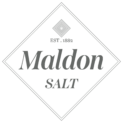When writing long-form content, it is essential that your words have a clearly-defined sense of character. The purpose of your content is to strengthen your relationship with your audience, earn their trust and position you as a leader in your field. Every blog post, article or web page you write is a transaction between your brand and the reader.
But what form do you want that transaction to take?
Should it feel like an informal conversation between peers? Or sober imparting of helpful information? Do you aim to teach, entertain or inspire? Or do you simply want to guide the reader to the correct product or service as efficiently as possible?
Grappling with questions like these can help brands to think more meaningfully about the tone of voice they wish to adopt.
But what exactly is a brand tone of voice?
Is it intrinsic to the success or failure of your content? Or is it simply an affectation that has little, if any, impact on things like brand loyalty and conversion rates? Join us as we explore the importance of brand tone of voice for SMEs.

Brand tone of voice (ToV) is the way in which the values, vision and personality of a brand are communicated in written and verbal communications.
If your brand was a person, what would a conversation with them feel like? Is your brand a witty and jocular, yet clever and insightful commentator on the everyday hurdles and challenges of daily life? Is it an empathetic, nurturing and caring presence that guides the audience through their everyday pain points? Or perhaps it’s an authoritative, succinct source of information readers can use to make an informed choice?
The answers to these questions will inform everything from the subject matter to the form and content of a brand’s written output. They will influence the syntax, mode of address and vocabulary of the content.
We’ve explored what brand ToV is conceptually. Now let’s take a look at how it looks practically.
Below, you’ll see the opening paragraph of this very article replicated in a number of different tones of voice.
Just to recap, here’s the unaltered text:
When writing long-form content, it is essential to imbue the words you write with a clearly-defined sense of character. Let us not forget that the purpose of your content is to strengthen your relationship with your audience, earn their trust and position you as a leader in your field. In that sense, every blog post, social media update, article or web page you write is a transaction between your brand and the reader.
But what form do you want that transaction to take?
The approach is relatively bold, addresses the reader, and takes a direct and professional yet fairly informal approach to their potential concerns.
Now let’s try and make it a little warmer and more supportive.
We understand how challenging it can be to imbue your content with life and character. You want to strengthen your relationship with your target audience, earn their trust and assure them of your ample expertise. Every piece of copy you create is a building block that can help to reinforce that relationship. But building blocks come in all shapes, sizes and colours.
What do you want yours to look like?
If you want something lively, but a little less fuzzy, you might want to lend it a humorously cheeky twist.
Content marketing can be a tough nut to crack. But, for SMEs as for professional dominatrixes, cracking those nuts is absolutely essential. Your written content is your passport to a stronger relationship with your target audience. Let’s face it. That relationship is all a bit ‘you, you, you’ right now. Your content marketing is an opportunity to give something back.
And if it just so happens to strengthen your value proposition? Hey, that’s better than a crack in the proverbial nuts!
Every post, article and page you write is an opportunity to show your target audience just how awesome you are. And how awesome you think they are. But the sad truth is that yours is just one voice in a cacophony trying to be heard. How are you going to stand out from the crowd?
Each version is communicating more or less the same message, but doing so in markedly different ways. Which do you want to be? Do you want to take elements of each and aim for something in between?
There are no wrong answers, but hopefully that exercise has helped you to consider what you want your brand ToV to be. And, crucially, what not to be.
It can take time and effort to create a consistent tone of voice for your brand. However, there are a variety of benefits that make it worthwhile. Your brand ToV can strengthen your audience’s personal investment in your brand and your offering, while also helping to differentiate you from your competitors.
Your ToV also humanises your brand, helping it to create a more favourable impression with new prospects and laying the foundations of loyalty and trust. In an age where consumers and businesses alike know that they can afford to be fickle, neither loyalty nor trust can be taken for granted.

Hopefully, this post has encouraged you to consider your brand ToV and the importance of establishing a consistent voice. But if the prospect of maintaining that ToV across both your in-house and outsourced writing is daunting, we have some tips to keep you on the right track.
A brand’s ToV should be intrinsically linked to the company’s buyer personas. These serve as an effective north star for all content marketing efforts and ensure that the copy resonates with its intended readership.
Before either writing the copy or a content brief for outsourced talent, it’s important to refer back to your buyer personas to better understand the needs and goals of prospective readers.
Moreover, it is important to consider what the reader needs from the content. Are they looking for reassurance? Do they want to feel special? Or should the copy feel like a collusion between reader and writer, giving them the inside track? Are they looking for something informative yet entertaining to read on their lunch break or commute? Or do their busy schedules demand that content be concise, direct and to the point?
As well as your buyer personas, your mission statement should also be at the forefront of your mind when writing or commissioning any new content, or pursuing any marketing efforts.
What is your reason for being? What do you do that your competitors can’t or won’t? What values and attitudes are inherent in your brand? Keep this in mind and ToV will start to flow naturally.
Whether you’re writing an ad campaign, an e-book or a social post, you are conveying a message to the reader. While this involves the conveying of information, it should also invoke specific feelings.
How should the reader feel after engaging with the copy?
Relaxed?
Reassured?
Inspired?
Should the copy feel like a relaxed conversation between friends, or like an invaluable lesson from a world-class expert? While the intended emotional reaction of the reader can be hard to quantify, it can also provide copy with an added resonance that keeps readers coming back for more.

When establishing a brand ToV, consistency is the key to success. But that consistency can be hard to maintain when there are numerous contributors to your brand’s voice. With internal team members, agency writers and outsourced freelancers all potentially adding to their content marketing output, brands need to take active steps to ensure that all copy feels as though it comes from the same source.
First of all, it is important to create a comprehensive set of brand ToV guidelines for new outsourced talent. This should include a description of your brand ToV, an explanation of your target audience, and some vocabulary dos and don’ts.
Secondly, all content should be regularly reviewed by business leaders to ensure that the messaging feels authentic and consistent with the brand.
Entrusting your brand ToV with external agencies or copywriters requires a leap of faith on the part of business owners. Nonetheless, with clearly established brand guidelines and proper oversight, brands can enjoy a unique voice that strengthens their relationship with their consumer base.











